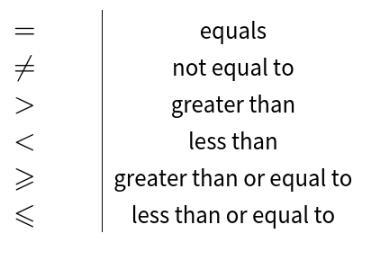max找出tensor 的行或者列最大的值:
找出每行的最大值:
import torch outputs=torch.FloatTensor([[1],[2],[3]]) print(torch.max(outputs.data,1))输出:
(tensor([ 1., 2., 3.]), tensor([ 0, 0, 0]))
找出每列的最大值:
import torch outputs=torch.FloatTensor([[1],[2],[3]]) print(torch.max(outputs.data,0))输出结果:
(tensor([ 3.]), tensor([ 2]))
Tensor比较eq相等:
import torch outputs=torch.FloatTensor([[1],[2],[3]]) targets=torch.FloatTensor([[0],[2],[3]]) print(targets.eq(outputs.data))输出结果:
tensor([[ 0], [ 1], [ 1]], dtype=torch.uint8)使用sum() 统计相等的个数:
import torch outputs=torch.FloatTensor([[1],[2],[3]]) targets=torch.FloatTensor([[0],[2],[3]]) print(targets.eq(outputs.data).cpu().sum())输出结果:
tensor(2)
补充知识:PyTorch - torch.eq、torch.ne、torch.gt、torch.lt、torch.ge、torch.le
flyfish
torch.eq、torch.ne、torch.gt、torch.lt、torch.ge、torch.le
以上全是简写
参数是input, other, out=None
逐元素比较input和other
返回是torch.BoolTensor

import torch a=torch.tensor([[1, 2], [3, 4]]) b=torch.tensor([[1, 2], [4, 3]]) print(torch.eq(a,b))#equals # tensor([[ True, True], # [False, False]]) print(torch.ne(a,b))#not equal to # tensor([[False, False], # [ True, True]]) print(torch.gt(a,b))#greater than # tensor([[False, False], # [False, True]]) print(torch.lt(a,b))#less than # tensor([[False, False], # [ True, False]]) print(torch.ge(a,b))#greater than or equal to # tensor([[ True, True], # [False, True]]) print(torch.le(a,b))#less than or equal to # tensor([[ True, True], # [ True, False]])以上这篇pytorch 常用函数 max ,eq说明就是小编分享给大家的全部内容了,希望能给大家一个参考,也希望大家多多支持python博客。
-
<< 上一篇 下一篇 >>
pytorch 常用函数 max ,eq说明
看: 1852次 时间:2020-09-07 分类 : python教程
- 相关文章
- 2021-12-20Python 实现图片色彩转换案例
- 2021-12-20python初学定义函数
- 2021-12-20图文详解Python如何导入自己编写的py文件
- 2021-12-20python二分法查找实例代码
- 2021-12-20Pyinstaller打包工具的使用以及避坑
- 2021-12-20Facebook开源一站式服务python时序利器Kats详解
- 2021-12-20pyCaret效率倍增开源低代码的python机器学习工具
- 2021-12-20python机器学习使数据更鲜活的可视化工具Pandas_Alive
- 2021-12-20python读写文件with open的介绍
- 2021-12-20Python生成任意波形并存为txt的实现
-
搜索
-
-
推荐资源
-
Powered By python教程网 鲁ICP备18013710号
python博客 - 小白学python最友好的网站!